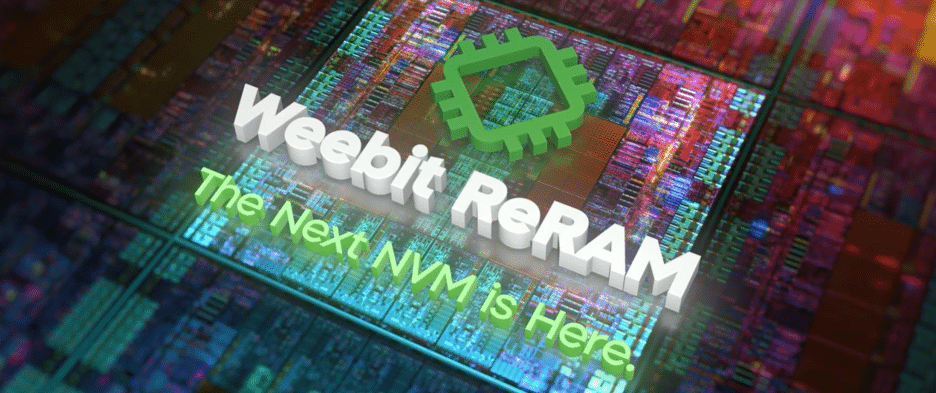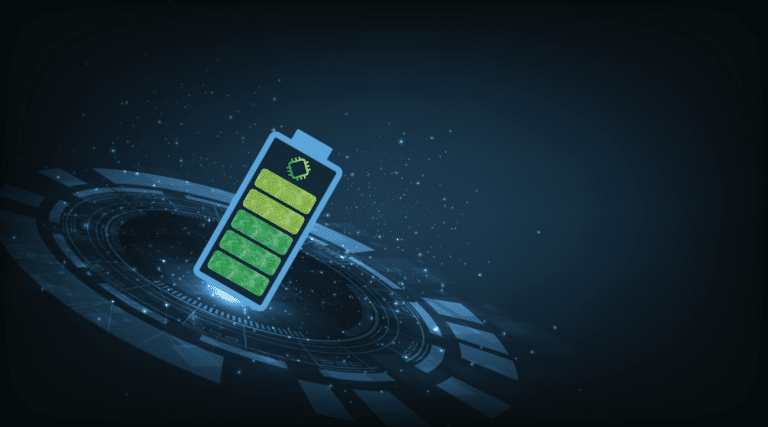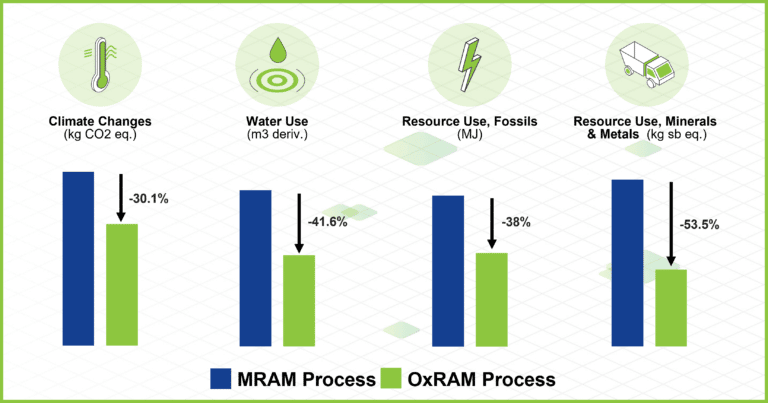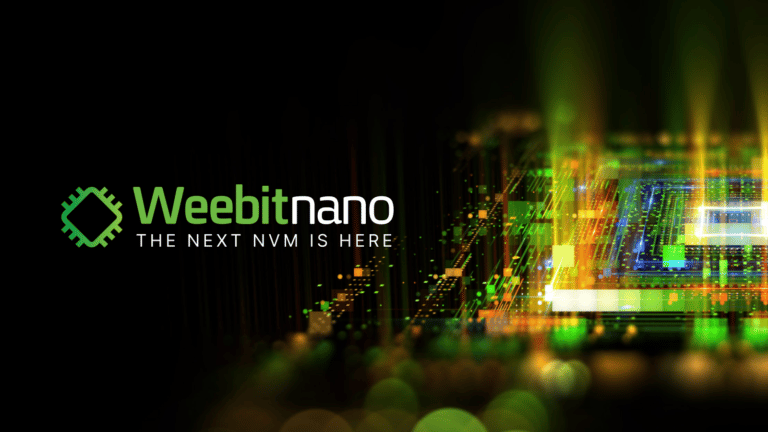
You might have seen the news that Weebit’s second Weebit ReRAM IP module is now available for the S130 CMOS process from SkyWater Technology. The IP is now fully qualified per JEDEC standards and is ready for mass production. We recently filmed a quick demonstration of the IP module to show that it’s functional, fast, and much lower power than flash.
You can watch the video by clicking below.
In the first part of the demo, we took a photo, added a Weebit logo, and saved it to the module—storing the image as ones and zeroes in the memory. As you watch the demo, take note of the energy consumption used to complete the Write operation, along with the comparison to typical NOR flash memory. You’ll see that Weebit ReRAM uses 0.23 millijoules of energy to complete the Write operation, while typical flash takes 33.0 millijoules for the same Write operation. The difference between the energy consumed by ReRAM compared to flash on the same operation is more than 100X!
There is a similar difference on Read energy, with Weebit ReRAM consuming 0.72 microjoules and flash consuming 28 microjoules – a ~40X difference!
After the photo has been stored once, we save it again. This time, the only thing that has changed in the image is the clock in the upper right corner. Because Weebit ReRAM has direct program capability and byte addressability, it only needs to actively store the new bits of the image – in this case the numbers on the clock. Parts of the image where data did not change require very little time and energy to access, and parts where new data was written require a bit more. You can see that it took 55.1 milliseconds to store the original image, and when stored with the small change, it only took 3.7 milliseconds.
Direct program capability and byte addressability are key differentiators compared to flash, which must access entire sectors of data every time it erases or writes. Looking at Write energy consumption, you can again see the advantage compared to flash: Weebit only consumed 0.02 millijoules for the operation, while the NOR flash would consume 2.2 millijoules for the same operation – a difference of 100X!
If you’d like to learn more about the low power consumption of Weebit ReRAM (or RRAM), check out our new article, How Low Can You Go? An Inside Look at Weebit ReRAM Power Consumption. And stay tuned for future videos and articles where we discuss this important topic.











